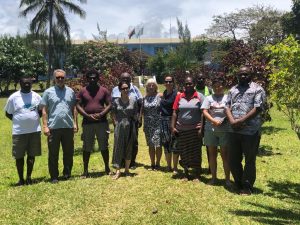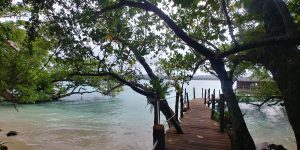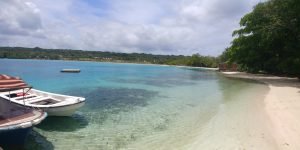Santo Island, Vanuatu Tourism Overview
Sanma is a province located in the Northern part of the nation of Vanuatu. It occupies the nation’s largest island, Espiritu Santo, located approximately 2,500 km northeast of Sydney, Australia.
Sanma Province is made up of the islands of Santo and Malo, and includes a number of smaller surrounding islands that sit just offshore. There is also Luganville, the second largest city in Vanuatu with its population of 16,312 inhabitants (based on the 2016 census).
The current population of Luganville is quite diverse. It comprises a vast majority of indigenous Ni-Vanuatu, and it also has a small population of Chinese and European descendants (English and French). Some of the locals, although residing in Luganville, come from other parts of Santo or different islands within Vanuatu.
In 2017, the Travel & Tourism industry directly supported 11,000 jobs (14.4% of total employment). This is expected to rise by 2.4% in 2018 and rise by 3.0% pa to 15,000 jobs (15.0% of total employment) in 2028.
Sustainable Destination Assessment of Santo Island, Vanuatu 
Funded by the Vanuatu Department of Tourism (DoT), the GSTC Destination Assessor, Dr.Mihee Kang, conducted an onsite assessment of Santo during November 2019. During the assessment they evaluated the destination’s policies and practices against the GSTC Destination Criteria and Performance Indicators. The performance indicators were used as means of assistance for the assessment and the result was described based on each indicator.
The onsite assessment occurred following a period of desk preparation; stakeholder mapping and related documents review. The GSTC conducted the onsite assessment over the course of official four days plus extra 2 following days; hence, the results of the assessment are termed a limited view of the destination management issues of Santo.
The Vanuatu National Sustainable Development Plan is the basis of tourism development. The Plan emphasizes monitoring of its implementation’s effectiveness and reporting of the results. It will be used for the period of 2016 to 2030 and serves as the country’s highest-level policy framework. It is founded on culture, traditional knowledge and Christian principles, and builds on Vanuatu’s development journey since their independence. The Plan outlines Vanuatu’s national development goals and policy objectives in order to translate the National Vision into priorities to be actioned that are aligned with the 17 SDGs of the 2030 Agenda for Sustainable Development.
The Sanma Provincial Government had also established a 10-Year Tourism Plan (2009-2018) for the province. A total of eight strategies were developed and implemented. The plan was made through various stakeholders consultation and workshops and it focused on capacity building, better organized management system, and tourism businesses. The plan covered management, socio-economic, and cultural sustainability, however, environmental, health, and safety issues were not dealt with specific action plans.
Global Sustainable Tourism Council Overview 
The Global Sustainable Tourism Council (GSTC) establishes and manages global sustainable standards, known as the GSTC Criteria. There are two sets: Destination Criteria for public policy-makers and destination managers, and Industry Criteria for hotels and tour operators.
These are the guiding principles and minimum requirements that any tourism business or destination could aspire to reach if they wish to protect and sustain the world’s natural and cultural resources, while ensuring tourism meets its potential as a tool for conservation and poverty alleviation.
Key Takeaways
The assessment result shows that Santo has high risk in sustainability and needs to take some actions to respond to the identified risks. Cultural and environmental management are most urgent and a comprehensive visitor management system is also requiring prioritization.
The GSTC encourages the destination to review the existing plans and laws, regulations and guidelines from all angles of environmental, socio-cultural, and economic sustainability and enforce and implement them to follow the GSTC Criteria.








